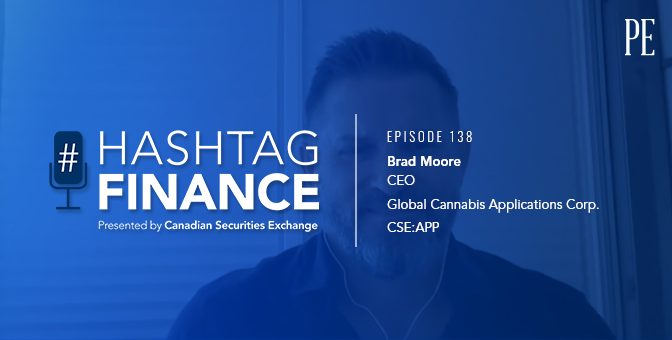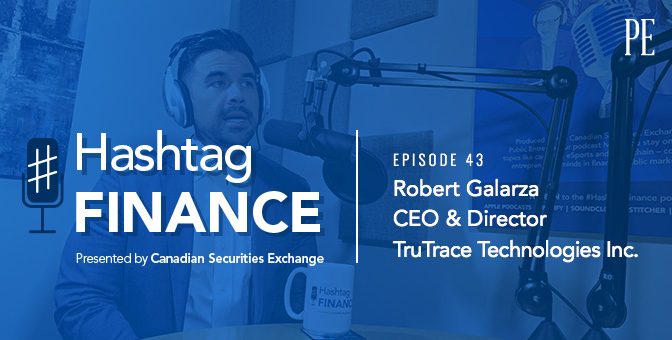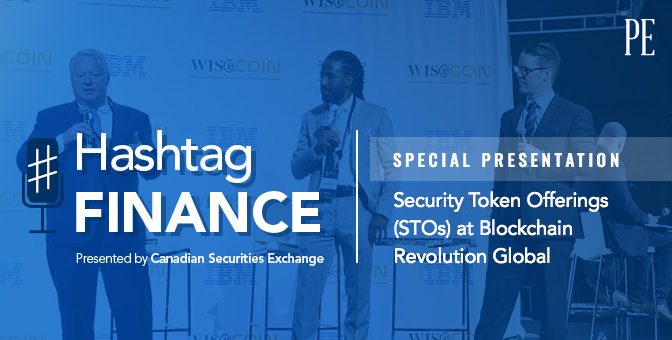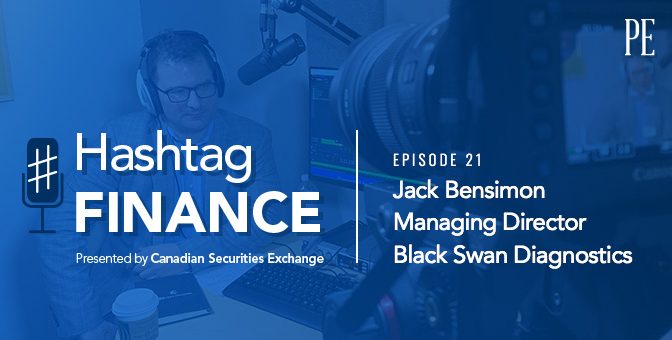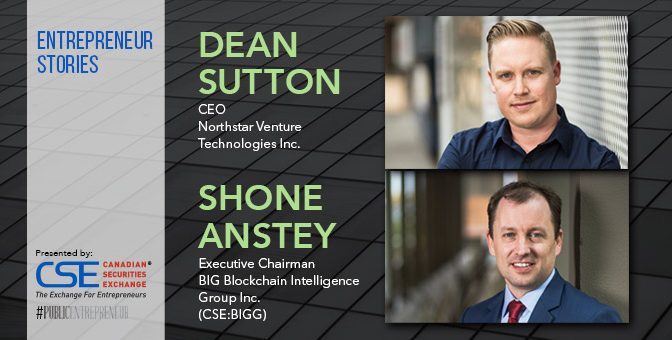The blockchain revolution: we speak to three industry leaders about how the landscape is shifting
Blockchain is an ingenious invention. That much is clear. It’s distributed. Permissioned. Immutable. It has the potential to be one of the most disruptive forces in business in decades.
Momentum is strong and changes are moving at a rapid pace. But how can blockchain actually be used in the future? Who is moving the space forward? Will the promise of it all be delivered?
Public Entrepreneur spoke to three executives who are leaders in pushing the space forward.
Interviewees:
Kate Hiscox, Founder, Venzee Technologies Inc.
Dean Sutton, Chief Executive Officer, Northstar Venture Technologies
Shone Anstey, Executive Chairman, BIG Blockchain Intelligence Group (CSE:BIGG)
Tell me a bit about your background. How did you get involved in this sector?
SA: I am Executive Chairman of Blockchain Intelligence Group having gotten my start with mining cryptocurrency in 2012. Since that time, we’ve done a number of things in the bitcoin space: industrial bitcoin mining (for clients), and built out cryptocurrency technologies and bitcoin mining pool software. At the tail end of 2014, we started work on leveraging our knowledge of search/analytics as it applies to bitcoin. In 2015, we formulated our company, which focuses on cryptocurrency-agnostic search and analytics solutions.
DS: I’ve been involved in the space since 2014, starting with working with friends doing mining out of a garage, and looking at models like a crypto-funded blockchain accelerator, and enabling rent payments with cryptocurrencies. It was quite early and we realized that the market was not quite there yet. I got heavily involved in working with data systems and integration, focusing on enterprise applications in things like health care. In 2017, BlockTech Ventures, now Northstar, was formally established to focus on the development, integration and commercialization of the core technology into existing markets.
KS: I’m a self-taught software engineer. I started coding many years ago and I’ve always had a fascination with technology. As bitcoin started to come into play in 2011/2012, that’s where it became very interesting. Probably about five years ago is when I understood the impact of what blockchain was really going to look like. For Venzee, we started looking at this in 2016. We focused more on what was the threat or the opportunity to our business and we realized quickly that our software was positioned perfectly.
What is blockchain and why is it important to the future? Explain it to me like I’m your grandmother.
KH: At Venzee, we see blockchain as networks that are just a different type of database in our world. For me, blockchain isn’t actually new, it’s based on an architecture that’s been around for many, many years. It’s great to see it now being applied in a way that’s safer for accountability and transparency.
SA: We’re really focused on cryptocurrencies, in our case bitcoin, which we call the public blockchain. So, we don’t say: what is blockchain? We say: what is bitcoin? It’s a new trust layer of the Internet itself which you can think of as layer 8 to the 7-layer OSI stack. This is the missing component to the Internet that has not been available since its inception 30 years ago. Bitcoin is blockchain, blockchain is bitcoin. The two are connected in ways you cannot separate.
DS: It’s a core foundational technology, like the Internet, that holds all data in an open ledger that cannot be altered and allows for frictionless peer-to-peer transactions of value, replacing the costs and intermediaries that are commonplace in business and finance.
It’s important because of what it can enable, but it takes time for technology to be understood and then adopted. In the future, without knowing it, you and the businesses and platforms you use on a daily basis will be functioning with this technology in one form or another.
How is the market for blockchain solutions doing? IBM has a big unit and there are lots of smaller companies with various solutions.
DS: The market for blockchain solutions is immense and global and is the key area of focus for Northstar. The reason is, industry knows the technology holds immense value. The challenge is in identifying the opportunities, then being able to build, test and integrate the new technology into existing systems. Commonly, companies are engaging with Ethereum, IBM’s blockchain protocol, or Hyperledger (Linux Foundation). If you look at who is engaging with the technology in a meaningful way, from the Fortune 500 level it’s easier to create a short list of the companies not engaging with it than to describe who is. This is increasing at an incredible pace.
SA: It’s still early. IBM is one company leading the charge. I don’t think we’ve quite seen who has the mantel yet, but I do believe the open-source movement will lead it.
In your view, what will the market respond to in the next year?
SA: I think you’ll see more majors moving into the pure cryptocurrency market. Companies like ours will help them get through the anti-money-laundering compliance issues. When you look at the amount of money these cryptocurrency exchanges are making, it’s a given. Companies have to play in this field or they will lose their edge. That fact is clear.
KH: At Venzee, we work with a range of clients, from huge retailers (Walmart, New Balance) on down. We’re having a lot of conversations about how blockchain is definitely of interest on an enterprise level. The industry is really starting to think about it — not necessarily implementing it — but they are finding that they are going to have a strategy or a use for this within the next three to five years.
DS: In the next year, we will see continued adoption, understanding, and the market generally understand more about the technology and what it means for industry. Less hype and initial euphoria, and more examples and use cases we can refer to. The technology itself will continue to advance, as it needs to, and we’ll see things like regulation that will come in and really bolster new innovation and capital markets participation in a whole new way.
The industry went through a profile and funding frenzy in the latter part of 2017 but has since gone relatively quiet. What takes us out of the quiet period?
DS: Further to what I just mentioned; reality, regulation, understanding and a simple precedent for what the technology is doing in the real world. All new technology has this initial “innovation trigger” followed by speculation, and a pullback. That’s where we are, and what was needed. Now we’re in a very exciting time where the tree has been shaken, and the market is in a place to allow for sustainable and pragmatic growth based on more factors than speculation.
SA: Technology is taking a bit of time, which makes sense, particularly when you’re dealing with cutting-edge technology. There’s only value in solving difficult issues. If you’re looking to do something that’s never been done before it will take you three times as long and three times the cost. People don’t understand the mechanics of how everything is being built. From a fundamental standpoint, a lot will change and certainly, from a market standpoint, more money is going to come in, but regardless, the technology and the network is growing and people will continue to latch onto it.
I know I’ve missed something. What have I missed? What are you excited about?
KH: In terms of Canada, I think it’s great to see the CSE moving up and paying attention to blockchain. Canada has the potential to really be a leader in the space. I was talking to someone recently that out of the 15 known cryptocurrency billionaires in the world, five of them are Canadian. That’s incredible. A lot of that innovation is coming out of Canada and we’ve got an opportunity here as a country to grab onto this industry and move it forward.
DS: We’re excited for a number of things. We’re excited to see this technology continue to evolve and advance, making its way into the businesses and platforms we all use. We’re excited to see baseless ICOs (Initial Coin Offerings) disappear into memory. For regulation, which will open up this new asset class, namely securities tokens (real equity, real assets) to the capital markets in a way never before done. To continue building real solutions for industry, helping advance the sector at large.
SA: Investors want to be able to draw the line between “what’s this technology” to actual real-world use cases. The CSE has been doing a ton of work on this and I think investors are going to be able to wrap their heads around this soon. That’s starting to come. The foundations are being laid. So, what will the next era bring? It creates an incredible opportunity for investors and for entrepreneurs as the new era marches forward.
This story was featured in The Public Entrepreneur magazine.

